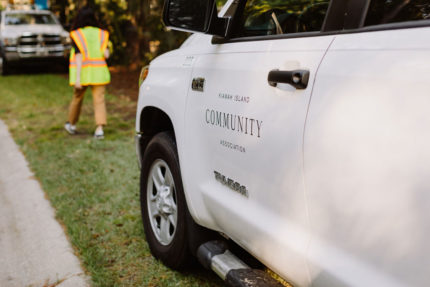May
06
2009
From The Blog
A Team Approach To Medical Emergencies
On March 27, a panel of four experts addressed association members about emergency medical services for Kiawah. Don Lundy, director of the Charleston County EMS, and Karl Ristow, fire chief of St. Johns Fire District, were joined by two MUSC physicians, Dr. Gary Headden and Dr. Edward Jauch, who treat emergency heart attack and stroke victims respectively.
Don Lundy of Charleston County EMS emphasized the importance of teamwork between EMS and the fire department. The two services meet regularly to discuss problems and consider how to improve their performance. Cooperation among Charleston hospitals, EMS personnel and fire department personnel facilitates effective emergency medical treatment.
Homeowners’ actions are vital for receiving effective emergency care. Most important is to learn the symptoms of emergency medical situations such as a heart attack and stroke, and to call 911 at the onset of symptoms.
Charleston County has 16 ambulances and 14 EMS stations. One ambulance is stationed on Kiawah, and when it is called out, another county ambulance is immediately moved closer to the area to be available for Kiawah Island. Therefore, Kiawah residents are not limited to the one ambulance on the island.
Fire Chief Ristow spoke at the panel about the St. Johns Fire District (SJFD). SJFD, established in 1959, has 121 employees and seven fire stations (two on Kiawah). Their primary mission is to respond to structure fires, but they also do EMS work. Only 1% of their calls are actually for fires; 38% are EMS calls; 43% are false alarms and the rest are other types of calls. Twenty-seven percent of SJFD calls for Kiawah Island are for medical emergencies. Chief Ristow stressed that Kiawah homeowners must reduce false alarm calls so that these EMS services are available for real emergencies. Similarly non-critical calls to EMS divert services for life threatening emergencies.
Summary of information from the question and answer session following the presentations:
EMS patients may choose the hospital they are taken to, but are urged to heed the recommendation of the medics, who can select the hospital most appropriate for patients’ needs. Panel members prefer Roper, MUSC (which has the only comprehensive stroke center in South Carolina) and Trident Medical Center, especially for cardiac emergencies.
In cardiac cases, EMS attendants perform an EKG and transfer the results to the destination hospital where an emergency room physician will contact a cardiologist. “Mission: Lifeline,” a national initiative under development by the American Heart Association, would enable medics to send EKG and other medical info to a web-based server. Cardiologists could view the information from any internet connection, including their own homes, and thus begin hospital procedures before a patient’s arrival.
Kiawah has 17 automated external defibrillators (AEDs). First responders will know the location of the nearest AED. For more information on AEDs, including training on their use, KICA offers bimonthly complimentary First Aid/CPR/AED certification courses. Visit www.kica.us/events_classes_fitness.htm for the 2009 schedule.
In an emergency, call 911 or an emergency medical facility immediately. Do not go to the fire station or call security. Drs. Gary Headden and Edward Jauch spoke about heart attack and stroke treatment. Their information included the following tips and advice. (This information is a summary and not intended as verbatimedical advice. In the event of an emergency, always call 911 or contact an emergency medical facility.)
• For symptoms of heart attack or stroke, call 911 immediately.
• The longer the time from onset of symptoms to treatment, the more serious the damage of a heart attack or stroke. Most people wait over two hours from onset of symptoms to call 911.
• Only about 25% of stroke patients seek medical care within the first six hours. The optimum time for treating stroke victims is within 60 minutes. After 150 minutes, successful treatment is minimized
• Do not be embarrassed to report symptoms.
• It is vital to tell EMS personnel when the first symptoms of an emergency medical event began.
• ER physicians work closely with EMS personnel to deliver state-of-the-art emergency treatment.
• EMS personnel can perform EKGs in the ambulance and transmit the results to the hospital so that hospital physicians can be prepared to immediately deliver the correct treatment.
• EMS alerts the hospital so that the proper emergency room staff can be ready when the ambulance arrives.
For more information from the March 27 session, including the powerpoint presentations from the meeting, please visit www.kica.us/ems.htm.

